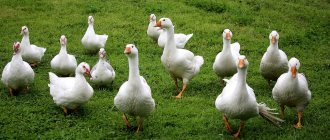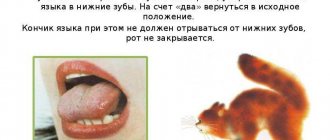Lesson summary “The letter v and sound [В]”
ALYONA Boltenko
Lesson summary “The letter v and sound [В]”
Lesson topic : “ Letters В в and sounds в-в ”
.
Purpose of the lesson :
Introduce children to the letter B and the sounds it represents;
Identify vowel sounds in the word scheme ;
Develop cooperation skills with adults and peers in various social situations;
Form a respectful attitude towards other opinions,
the ability to avoid creating conflicts and find ways out of controversial situations.
Develop the ability to organize your workplace, the ability to answer questions from the teacher and classmates; listen and understand the speech of others;
Develop speech, memory, attention, logical thinking;
Foster a love of reading;
Speech therapy lesson “NOD. Sounds V, V, letter V"
Municipal budgetary preschool educational institution
“Kindergarten No. 9 “Sun” combined type
Direct educational activities in a speech therapy group preparatory to school in the educational field “Communication”
Subject. Sounds V, V, letter V.
Author
teacher speech therapist
Kozlovskaya Galina Dmitrievna
Prokopyevsk 2013
GCD theme. Sounds V, V, letter V.
Integration (GCD):
(“Communication”), (“Health”), (“Socialization”)
Tasks:
- consolidate work methods for the development of phonemic perception based on the use of elementary and complex forms of phonemic analysis in the course of various types of activities with the sounds B, B; ("Communication")
- promote the development and normalization of the emotional-volitional sphere through the activation of motor kinesthesia, exercises for the development of prosodic components of speech; ("Health")
- strive to develop the communicative qualities of an individual through the use of various methods of children’s activities; ("Socialization")
- demonstrate the results of joint work with parents to prepare children for school. ("Socialization")
Materials and equipment:
a panel depicting the sun and sunbeams, non-speech support “Consonants”, pictures - symbols for pronouncing isolated sounds V, V, sound sounds V, V, sound pencil cases, plumes, wind blowers, mini-pools with sand, pictures in a contour image in a noisy form, colored pencils (red, green, blue), puzzles, a key with the letter B, stars, symbols of smart guys and smart girls.
Methodical techniques:
ritual of starting classes, didactic exercises, guidance in viewing and analyzing objects and pictures, story - reasoning using visual non-verbal support, work with sound patterns, game motivation, did. games, dynamic pause, solving puzzles, explanation from a speech therapist.
Preliminary work:
memorizing chants, games to form a directed air stream, games with sand, solving puzzles.
The logic of direct educational activities.
I
.
Organizing time
.
1. Zaklichka with elements of psycho-gymnastics
(In a circle).
Speech therapist.
With the onset of spring, in the old days people often called for the sun to visit.
- What does “call out” mean?
(
call, invite
)
Let's invite the sun to visit.
Children.
“Hello, bell sun!
Come visit us!
We have to get up early
Let's welcome spring!
A panel opens, depicting the sun with sunbeams. (The number of sunbeams corresponds to the number of students participating in the NOD. They can be removed from the picture.) On the back side of the sunbeams there are object pictures glued (group 1: cotton wool, water, owl, sofa cow, diver; group 2: button, fork, grapes) and printed words (stolen, wind, sounds). (Annex 1.)
Speech therapist.
The sun wants to tell us something. Everyone left their own
Hello - sunbeam. Consider it.
2.Did. exercise “Find out what the sunbeam wants to communicate?”
Speech therapist. To find out what the sun wants to communicate, you first need
divide into three groups.
(The division into groups can be carried out on the basis of a differentiated approach: pupils who can read; according to the social principle: boys - girls; according to interests).
Each group must complete the task:
- read the words on the back of the pictures and make a sentence from these words;
(The wind stole the sounds.) - name the words from the pictures, think about what identical sound is hidden in the words:
cotton wool, water, owl, sofa cow, diver? (Sound B) - name the words from the pictures, determine what identical sound is hidden in the words:
button, fork, grapes? (Sound V)
II. Introducing the sounds V, V.
Speech therapist. The wind stole the sounds V and V from the land of beautiful and correct speech
Chrysostom and the letter B from the ABC. He was offended that he was not invited to
guests. After all, he helps us pronounce sounds.
By participating in the duel of experts “Clever girls and smart guys”, we will be able to return sounds and letters.
Each correct, original and smart answer is rated with a red asterisk, for a good answer - a blue asterisk, a gray asterisk means that you need to try.
1. Characteristics of the sounds B and Bb according to acoustic-articulatory characteristics.
A. Let's talk about the sounds B and B.
“Pomogalochka” will help us. (Appendix 2)
Lightly touch your upper teeth to your lower lip. Say the sound B.
- What is his last name?
(Sound B is a stirrer, he cannot sing. His upper teeth prevent him from singing, so he is a consonant. His last name is Consent.)
Place the back of your hand on the neck.
- Is the voice sleeping or ringing? (The bell rings.)
- Voiced or dull sound?
(Voiced) - What do you think is the character of the B sound?
Soft or hard? (Hard)
What kind of suit does he wear?
(Blue)
Name the full name of the sound V. ( Consonant, voiced, hard)
Say his brother in each other's ears. (Sound V)
- What kind of suit does he wear?
(Sound V wears a green suit.)
b. Game “One, two! Turn around and turn into sound!”
Girls turn into the sound V, and boys into the sound V.
On the table the children have suits of vowels and consonants, hard - soft, voiced - dull sounds. Everyone find their own suit and put it in a green or blue hoop.
2. The game “Windmills - screamers”.
Two teams play.
Take the plumes (team 1) and wind blowers (team 2) in your hands and start blowing at a count of 1-2. Make sure your shoulders don't rise.
Then clearly, without errors, repeat the screaming and winding. First, the whole team speaks, and then a representative from the team.
1 boys team
(Say it quietly.)
Woo - woo - woo, woo - woo - woo,
— Vasilkov bouquet to Narva.
2nd team
of girls ( Report so that everyone can hear.)
Vi - vi - vi, vi - vi - vi,
- Just don’t tear them too much.
3. Game "Hide and Seek".
The breeze wants to play hide and seek with you.
A. Passive-active gymnastics “Finger pool”.
Mini-pools with sand are brought in. 2 teams play.
There's something hidden there.
You need to find it by completing the following tasks:
- use a pinch of sand to depict winding a thread around a ball;
- write the vowels A, U, O, I, Y, E with different fingers.
At the bottom of the pools there is a package with pictures in outline images of objects . (The number of pictures corresponds to the number of pupils)
b. Didactic exercise “Find out which sound V or V is hidden in the word?”
- Recognize an object in a noisy contour image. Determine which named sound is hidden in the word. Paint the suit with the appropriate color in the desired cell (beginning, middle, end of the word).
Words: cow, vase, fork, tree, TV, star;
fork, button, letters, wolf, vase, cow.
(At the bottom of the pictures is a strip divided into three parts (beginning, middle, end.
4.Dynamic pause
(To music)
- Depict how the wind shakes the trees in the forest and they groan;
how birds fly and flap their wings, feeling the breeze running through their wings .
(Children pronounce the sounds V and V).
Let's turn into birds and fly.
- Remember the birds whose names contain the sounds V or V.
(
Sparrow, crow, owl)
5. Sound analysis of the word “Owl”.
- Open the sound pencil cases and lay out the diagram of the word. In the name of this bird, the B sound is in the middle.
(Sound pencil cases are pencil cases in which there are red chips to indicate vowel sounds, blue with a bell - for hard voiced consonants, blue without a bell - to indicate hard voiceless sounds, green with a bell - for soft voiced consonants, green without a bell - to denote soft voiceless consonants. When conducting phonemic analysis, the diagram of the sound composition of the word is filled with colored chips
.
Strong children work at desks, one at an easel, the rest on the ground.)
Children must divide the word into syllables, arrange the syllables into sounds, pronounce the word by sounds, name vowels and consonants).
7. Working with puzzles.
Decipher the puzzles.
- What is this?
(Letter O) - Find out what words are hidden in O?
Notice how I asked: “Hid in
O
”?
So you will answer: “ In O and further you name the letters
.”
Pictures of an ox and a wolf are displayed.
- What is the difference between an ox and a wolf?
(A wolf is a wild animal, and an ox is a domestic animal).
Make up sentences with the words ox and wolf using the diagrams.
1 ______ _______ . 2 ______ ________ _______.
- Solve the following puzzles
.
III. Introducing the letter V.
When solving puzzles, you cast a spell so that the letter key B appears.
- About






